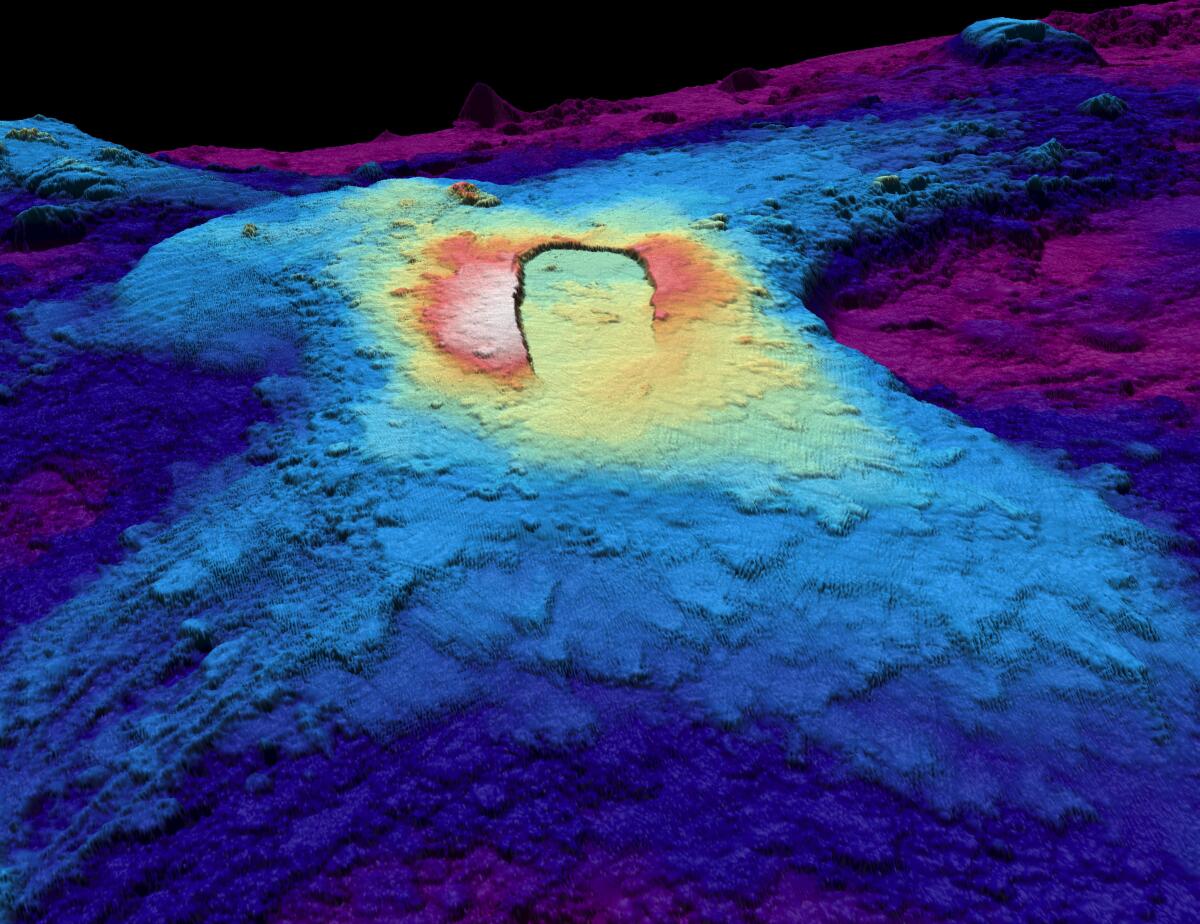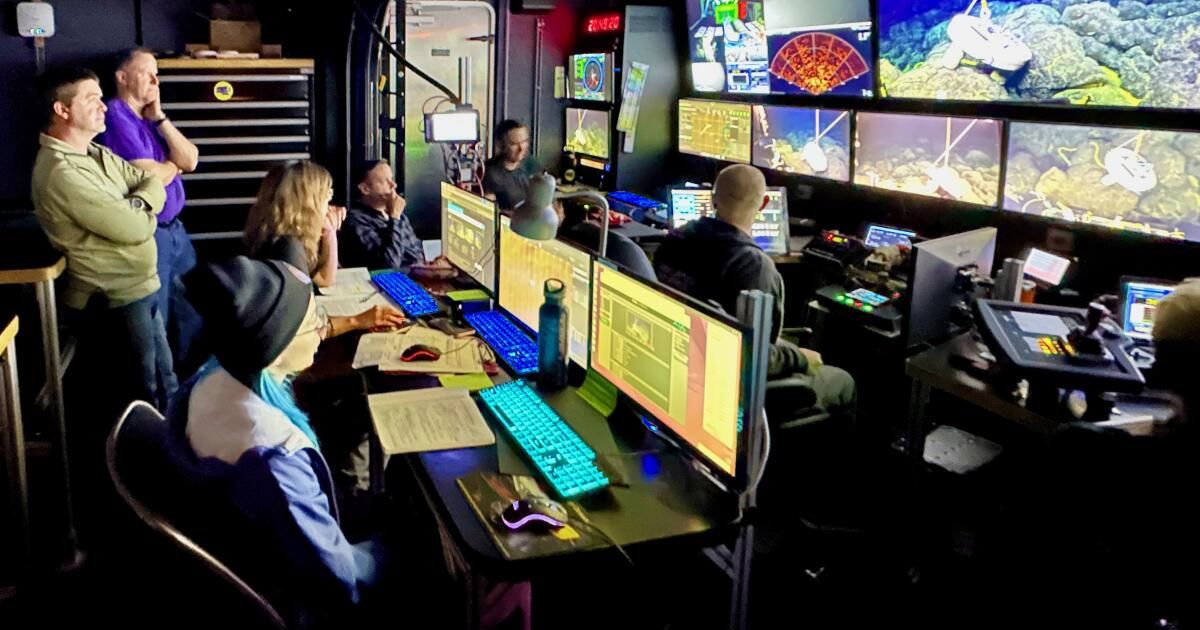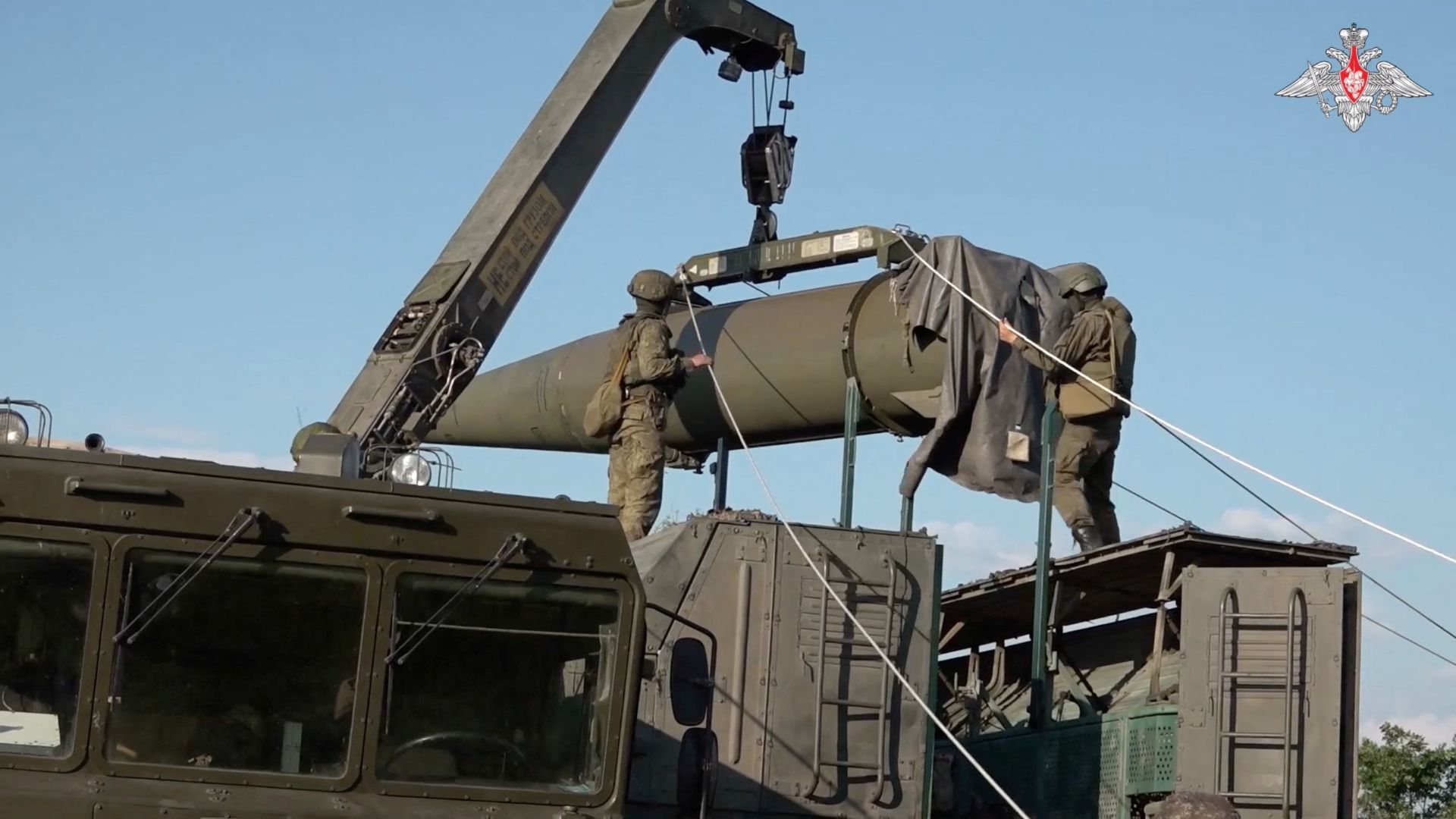• Axial Semount is the best monitored underwater volcano in the world.
• It is the most active submarine volcano closest to California.
• It could explode by the end of the year.
An mysterious and highly active submarine volcano off the Pacific coast could explode at the end of this year, scientists say.
Almost a mile depth and about 700 miles northwest of San Francisco, the volcano known as a submarine axial is drawing a growing scrutiny of scientists who only discovered their existence in the 1980s.
Located in a dark part of the Pacific Ocean of Northeast, the underwater volcano has exploded three times since its discovery, in 1998, 2011 and 2015, according to Bill Chadwick, research associate at Oregon State University and expert in the volcano.
Fortunately for the residents of California, Oregon and Washington, the axial submarine mountain does not explosively explode, so it represents zero risk of Tsunami.
“Mt. St. Helens, Mt. Rainier, Mt. Hood, Crater Lake: that type of volcanoes have much more gas and are more explosives in general. Magma is more viscous,” said Chadwick. “Axial looks more like volcanoes in Hawaii and Iceland … less gas, lava is very fluid, so the gas can go outless.”
The destructive force of explosive eruptions is legendary: when Mount Vesubio blew in 79 AD, he annihilated the ancient Roman city of Pompeii; When Mount St. Helens exploded in 1980, 57 people died; And when the Hunga Tonga-Hunga Haʻapai volcano in the Tonga archipelago exploded in 2022, a unique event in the century, the resulting tsunami, which reached a maximum height of 72 feet, caused damage to the Pacific Ocean and left at least six dead.
The axial submarine mountain, on the contrary, is a volcano that, during eruptions, ozuma lava, similar to the type of eruptions in Kilauea on the great island of Hawaii. As a result, axial rashes are not notable for people on land.
It is a very different story underwater.
The heat columns of the eruption will rise from the seabed, perhaps half a mile, but will not reach the surface, said William Wilcock, professor of oceanography at the University of Washington.
Jason is a remote operated vehicle system (ROV) designed to allow scientists to have access to the seabed without leaving the ship.
(Dave Caress/Mbari)
The outermost layer of the lava flow will cool almost immediately and form a crust, but the inside of the lava flow can remain melted for a while, said Chadwick. “In some places … the lava comes out more slowly and accumulates, and then there is all this heat that has been dissipating for a long time. And in those thick flows, microbial carpets can grow, and almost seems snow on a landscape.”
Marine life can die if it is buried by lava, which also runs the risk of destroying or damaging scientific equipment installed around the volcano to detect eruptions and earthquakes. But the eruption will probably not affect marine life like whales, which are “too close to the surface” so that the eruption is disturbed, Wilcock said.
In addition, eruptions on the axial submarine mountain are not expected to trigger a long -standing 9.0 magnitude earthquake in the Cascadia subduction zone. Such earthquake would probably generate a catastrophic tsunami for the most north of Washington, Oregon and California coastal counties. This is because Axial Semound is located too far from that great failure.
Axial Semount is one of the innumerable volcanoes that are underwater. Scientists estimate that 80% of the volcanic production of the Earth, Magma and Lava, occurs in the ocean.
Axial Lady has attracted an intense interest of scientists. Now is the best monitored underwater volcano in the world.
The volcano is a prolific erupting partly due to its location, said Chadwick. Not only is it perched on a crest where Juan de Fuca and Pacific tectonic plates extend to each other, creating a new seabed in the process, but the volcano is also firmly planted above a geological “hot point”, a region where the overheated magma feathers rise to the surface of the earth.
For Chadwick and other researchers, frequent eruptions offer the tempting opportunity to predict volcanic eruptions with weeks in advance, something that is very difficult to do with other volcanoes. (There is also much less likely that someone gets angry if scientists are wrong).

A three -dimensional topographic representation that shows the boiler of the axial submarine mountain summit, a highly active submarine volcano on the Pacific coast. The warmer colors indicate less deep surfaces; The coldest colors indicate deeper surfaces.
(Susan Merle / Oregon State University)
“For many volcanoes worldwide, they sit and are inactive for long periods of time, and suddenly it is activated. But this is quite active all the time, at least in the period of time we have been studying,” said Chadwick. “If you are not erupting, you are preparing for the next.”
Scientists know it because they have seen a pattern.
“Among the eruptions, the volcano inflates slowly, which means that the seabed increases … and then, during an eruption, when the magma comes out, the volcano deflates and the seabed falls,” Wilcock said.
The eruptions, said Chadwick, are “how to let something out of the globe. And what we have seen is that he has inflated to a similar level every time an eruption is triggered,” he said.
Chadwick and his scientific partner Scott Nooner predicted the eruption of the 2015 volcano seven months before it occurred after they realized that the seabed was inflating in a quite quick and linear way. That “made it easier to extrapolate in the future to reach this threshold that had achieved before” eruption, said Chadwick.
But making predictions since then has been more challenging. Chadwick began to make forecast windows in 2019, but around that moment, the inflation rate began to decrease, and for the summer of 2023, “he had almost stopped. Then it was like, 'Who knows when he will explode?'”

A deep water octopus explores lava flows four months after the submarine axial volcano exploded in 2015.
(Bill Chadwick, Oregon State University / Woods Hole Oceanographic Institution / National Science Foundation)
But at the end of 2023, the seabed began to slowly inflate again. Since the beginning of 2024, “it has been a bit started at a fairly stable pace,” he said. He and Naoner, from the University of North Carolina in Wilmington, made the last prediction of eruption in July 2024 and published it in their blog. Your prognosis remains unchanged.
“At the inflation rate that goes, I hope it explodes for the end of the year,” said Chadwick.
But according to the seismic data, the volcano is not likely to be imminently exploding. While scientists have not dominated the prediction of volcanic eruptions weeks or months before, they do a decent job by forecasting eruptions of minutes or days before, using clues as a greater frequency of earthquakes.
At this point, “we are not at the high seismicity rate we saw before 2015,” Chadwick said. “I would not be surprised if I exploded tomorrow, but I am thinking that it will not be generally.”
He warned that his forecast still equals an experiment, although he has become quite public. “I feel it is more honest that way, instead of doing it retrospect,” Chadwick said in a presentation in November. The prognosis began to attract attention after giving a talk at the American Geophysical Union meeting in December.
On the positive side, he said: “There is no problem having a false alarm or being wrong”, because the predictions will not affect people on land.
If the predictions are correct, “maybe there are lessons that can be applied to other more dangerous volcanoes worldwide,” Chadwick said. However, as it is now, to make forecasts for eruptions for many volcanoes on land “are simply more complicated”, without having a “repeatable pattern as we are seeing on this on the high seas.”
Scientists in other places have examined other ways of forecasting underwater eruptions. Scientists began to notice a pattern repeatable in the growing temperature of hydrothermal vents in a volcano in the Eastern Pacific and the moment of three rashes in the same place in the last three decades. “And it worked,” said Chadwick.
Good luck allowed scientists to photograph the eruption of the volcanic site known as “9 degrees 50 minutes north in the rise of the Eastern Pacific”, which was only the third time that scientists had captured images of active underwater volcanism.
But Chadwick doubts that researchers will be lucky enough to record Moontount's eruption.
Although scientists will be alerted by the Ocean Ocean Observatorio Initiative of Fundated National Science Foundation, a regional wired matrix, a sensor system operated by the University of Washington, arriving in time will be a challenge.
“You must be in the right place at the right time to catch an eruption in action, because they don't last long.
And then there is the difficulty of obtaining a ship and a vehicle or submarine operated at a distance to capture the images. These ships are generally scheduled very much, maybe a year or a year and a half of departure, and the projects are closely scheduled.
Chadwick was for the last time to the volcano in 2024 and is expected to come out then in the summer of 2026. If its predictions are correct, the axial submarine mountain will already have exploded.












